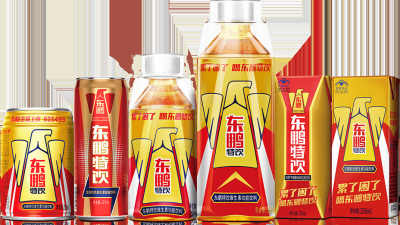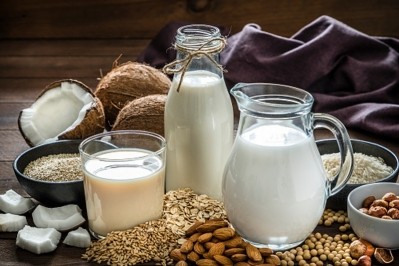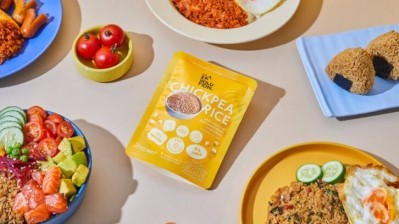Low protein, significant nutritional differences noted in plant-based beverages – China study

They have also pointed to significant differences in nutritional value across products and have urged consumers to carefully check labels.
There has been an increasing prevalence of plant-based consumption in China due to health and environmental reasons, so researchers at Tsinghua University, China, wanted to investigate the nutritional composition, fortification, and additives of plant protein beverages.
Between July to October 2022, 251 products from 138 brands in China were studied, and the data gathering was conducted over China’s biggest online shopping platforms, Taobao and JD.com.
The nutritional value of the products was compared against the Nutrient Reference Values (NRV) in China, and SPSS software was used for the data analysis.
Where plant-based protein beverages do worse than dairy
Plant protein beverages generally have a low protein content ranging from 0.0 to 1.5 g/ 100 mL. Soy beverages were ranked the top with the highest protein content at 3.0 g/100 mL.
Due to their naturally low sugar content, plant protein beverages generally had lower carbohydrate and energy levels at 262 kJ/100 mL. On the other hand, grain beverages such as oat or rice contain higher carbohydrates due to its starch.
Despite its low sugar content, it is key to note that 74.5% of the products had added sugar or sweeteners to enhance the taste.
Other additives like oil, stabilisers, and emulsifiers have also been used to ensure the stability and “milk texture.” These products can last up to 12 months. Only 6.8% of the products are free of additives, and only uses water and plant-based ingredients.
In terms of fortified content, plant protein beverages have lower vitamins – typically fortified with vitamin B2, vitamin B12, vitamin D and vitamin E – and minerals, as well as calcium, compared to its dairy counterparts.
The researchers explained the challenge of nutritional fortification for plant protein beverages: “The bioavailability of fortified plant protein beverages may be compromised due to the presence of “anti-nutrients” such as phytic acid, oxalate, lecithin and saponin, which can reduce mineral absorption and digestion in the human body. Therefore, despite fortification, plant protein beverages still lack several critical nutrients provided by milk.”
Where plant protein beverages do better
Some notable advantages plant protein beverages have over milk is the absence of lactose and presence of dietary fibre.
However, these benefits are not substantially labelled – only 4.4% of the products are labelled “lactose-free” and only half of them labelling the dietary fibre content containing 1.5 g or more / 100 mL.
The study found that all products had a lower fat content compared to milk, and are characterized by high unsaturated fats and cholesterol-free.
Oats, coconut, and walnut beverages had a relatively higher fat content among the other products, but still lower as that of milk (3.3 g/ 100 mL).
The functional benefits of plant protein beverages remain debatable. One camp says: “Soy saponins can inhibit the DNA synthesis and cell metastasis of tumor cells and have a variety of physiological activities such as anti-oxidation and anti-hyperlipidemia properties and the inhibition of liver dysfunction.
“Almonds are rich in vitamin E and selenium and contain amygdalin, a compound unique to apricot plants. Amygdalin has an anti-tumor effect on solid tumors such as lung cancer by influencing the cell cycle and inducing cell apoptosis. Peanuts contain Aminobutyric acid, which has the physiological function of promoting sleep and has been used in beverages and other foods.”
On the other camp, the paper elicited that there is a relationship between soy isoflavones and breast enlargement and breast cancer risk. Also, coconut has high saturated fatty acid content and has been linked to cardiovascular risk.
Nutritional labelling at focus
As labelling of sugar, lactose and dietary fibre content is not mandatory in China, inconsistencies in labelling were noted across the different products.
Although majority of the products had added sugar, about 15.5% of them were still marked “sugar-free” to attract consumers. Only 13.1% of the products were indicated the vitamin and mineral content on the packaging.
While “lactose-free” was universal for all products studied, only 4.4% of them were labelled that way, “indicating a need for improved labelling practices to facilitate informed choices for lactose-intolerant individuals,” the researchers said.
Especially for consumers who are seeking plant-based options for health reasons, the researchers said there is a need for them to refer to the nutritional label before purchase:
“When choosing plant protein beverages, consumers should pay close attention to the nutritional composition table, ingredient list, and allergy information provided on the product packaging.
“Individuals with lactose intolerance and milk protein allergies should be aware that some products labelled as “plant protein beverage” or containing “plant protein” in their keywords on shopping websites may still contain milk powder. Therefore, it is essential to carefully review the allergy information indicated on the product packaging.”
Concluding the paper, the researchers expressed that the challenge remains for plant protein beverages as “it is still difficult to completely replace milk… despite their unique nutritional advantages,” and emphasised the need for consumers to still seek out other dietary sources to obtain nutrients for a holistic diet.
Source: nutrients
“Nutritional Composition of Plant Protein Beverages on China’s Online Market: A Cross-Sectional Analysis”
https://doi.org/10.3390/nu15122701
Authors: Zhang, J., et al.






















